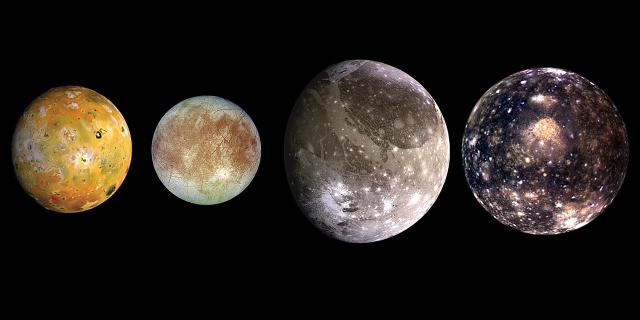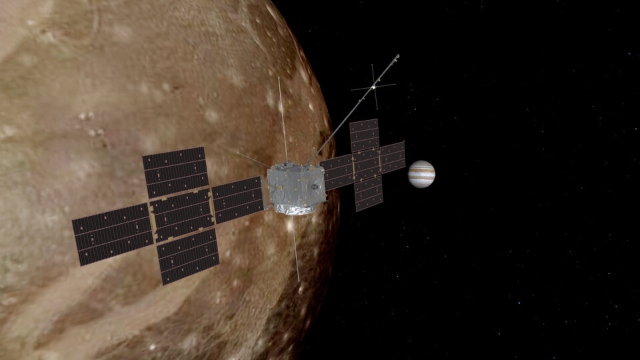[imagesource:wallpaperflare]
Exciting times for anyone who is interested in the biggest question of our time: Are we really alone in the solar system?
We’ll have to wait almost a decade to find out.
The Ariane-5 rocket carrying the JUICE probe blasted off from the Kourou spaceport in French Guiana yesterday. It was a relief for scientists from the ESA after Thursday’s launch attempt was aborted at the last minute.
The probe will travel to Jupiter and its icy moons to look for signs of life under the icy crusts of Callisto, Ganymede and Europa.
“We have a mission; we’re flying to Jupiter; we go fully loaded with questions. Juice is coming, Jupiter! Get ready for it.”
The €1.6bn (R1,6 trillion) mission will use ‘gravity assist’ from Earth, Moon, and Venus to speed up on its journey to Jupiter, but even at crazy speeds, the JUICE mission will only get to its intended target in eight years.

Callisto, Ganymede, and Europa are thought to retain vast reservoirs of liquid water under their icy crusts, and as we know, where there is water, there is very likely life.
Gravitational squeezing the gas giant exerts on its moons means they potentially have the energy and warmth to drive simple ecosystems – much like the ones that exist around volcanic vents on Earth’s ocean floors.
Europa is particularly interesting as scientists believe that it may have a 100km deep ocean underneath its ice crust.
“That depth of ocean is 10 times that of the deepest ocean on Earth, and the ocean is in contact, we think, with a rocky floor. So that provides a scenario where there is mixing and some interesting chemistry.”
Jupiter’s moons are relative in size to Earth’s own satellite, the moon, albeit slightly larger at 4 800km to 5 300km, whereas our own Luna is 3 500km across.
Radar will be used to see into the moons; lidar, a laser measurement device, will be used to create 3D maps of their surfaces; magnetometers will explore their intricate electrical and magnetic environments; and other sensors will collect data on the whirling particles that surround the moons.
The BBC reports that the satellite carrying the JUICE probe will have to rely on its huge solar wings in order to power onboard systems. This is particularly difficult so far away from the sun.

[source:bbc]





